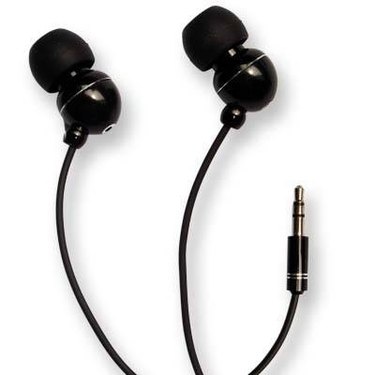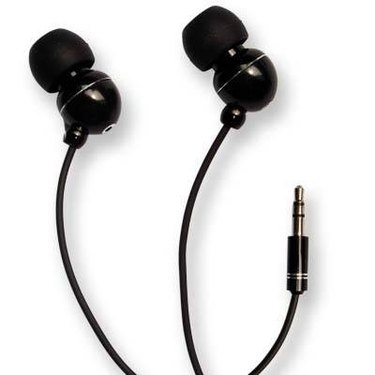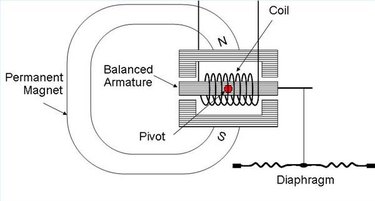
Earphone Materials and Structural Decisions

An earphone manufacturer starts with basic questions: Do I want my earphones to be wireless or wired, and do I want to them to be inexpensive, or long-lasting? These questions will determine what components the earphones will have, and what materials will be used to make them. Most earphones are made of pre-molded plastic, carbon elements, polymers and metal components, with additions like gel cups for your ears, and rubber for protection or comfort.
All these materials need to be available to the manufacturer, and some they might purchase already created by another supplier, such as the gel cups or the wire for earphone connection. These pre-made parts will be included in the master design of the earphones.
Video of the Day
Video of the Day
Many of these components alone will affect how the sound is produced. If a manufacturer creates thicker cables, not only will they last longer, but the audio quality will also be improved. If the jack is gold-plated, the headphones will cost more, but transmit sound more clearly. If the maker decides to add noise canceling or dampening affects, these will also affect the materials and designs used.
Sound-Producing Systems for Earphones

The most important part of the earphone design is the sound-producing component. The frame of the earphones will be built around this part. There are several different sound systems a manufacturer can make. Traditionally, earphones were made with a small dynamic driver, where a magnet is placed in each earphone, creating a small magnetic field in which a coil of wire is trapped. Electric signals are sent through this wire, creating a different magnetic force, and the two forces playing off each others create the sound vibrations picked up by your ears.
The design becomes more complex if better audio quality is desired. Some designs have two coil-magnet device per earphone, one for bass sounds and one for treble sounds. For more precise control of sound waves, developers may use an alternative membrane method in which a membrane is set up instead of the driver, and charged with electricity to make it move. Its movements are picked up by an mini-amplifier, and turned into the sounds you hear.
There are other systems used to produce sound, but one of the most complicated and exclusive is the balanced armature design, which uses the membrane idea, but adds a revolving magnet within the overall magnetic field. This magnet stays balanced when not used, but when powered by electricity, it pivots and moves the membrane, thus creating the sound.
Manufacturer Additions and Studies
Once the sound system has been created, the developers will add peripheral components to perform other tasks. Sometimes, they will include a control system that links to the media player, sending signals to the player, so users can control volume, or change song tracks with buttons on their earphones. Bluetooth earphones require extra components to send and receive wireless signals to compatible devices. Earphones that have active noise cancelling are connected with complex systems that detect outside noise, and generate signals to counteract the noise. Manufacturers spend years studying the effects of their inserts, listeners' bone density, sound leakage and binaural patterns so they can create an earphone design with minimal distortion and maximum quality.